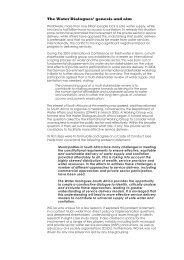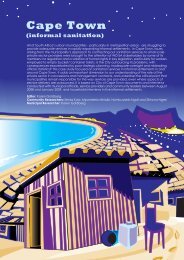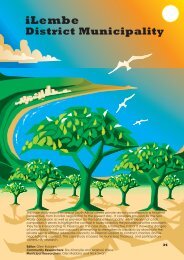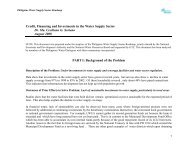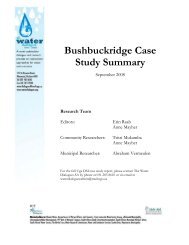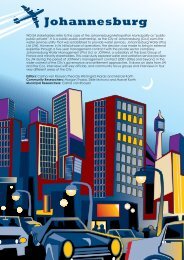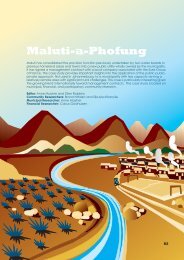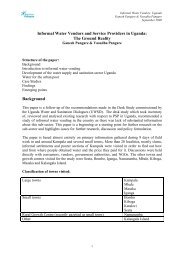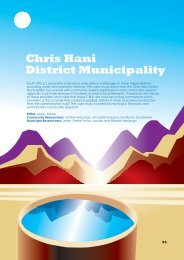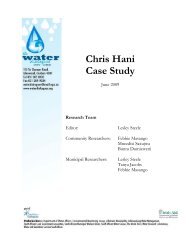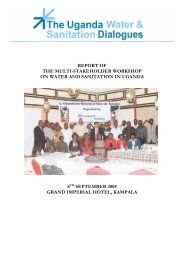Ugu Case Study Summary - The Water Dialogues
Ugu Case Study Summary - The Water Dialogues
Ugu Case Study Summary - The Water Dialogues
You also want an ePaper? Increase the reach of your titles
YUMPU automatically turns print PDFs into web optimized ePapers that Google loves.
Context<br />
<strong>Ugu</strong> DM consists of six local municipalities: Umuziwabantu, Ezinqoleni and Vulamehlo are located<br />
inland, and Umzumbe, Umdoni and Hibiscus Coast on the coast. In terms of physical development,<br />
<strong>Ugu</strong> DM resembles a ‘T’ shape: areas along the coast have well developed infrastructure and<br />
reasonable economic growth, while the large rural areas are characterised by poor infrastructure<br />
and high unemployment levels.<br />
Key demographic information about <strong>Ugu</strong> DM includes:<br />
<strong>Ugu</strong> DM has over 700,000 residents, about 7.5 percent of thepopulation of KwaZulu-Natal;<br />
84 percent of the <strong>Ugu</strong> DM population resides in the rural areas, while the remaining 16<br />
percent are urbanised;<br />
<strong>The</strong> population is largely low-income. More than 44 percent of households earn less than<br />
R1,500 per month and almost 60 percent earn less than R2,500 per month. <strong>The</strong> unemployment<br />
rate for the district as a whole is estimated at 30 percent; and<br />
Urban areas tend to be wealthier and have access to better infrastructure, more economic<br />
opportunities and a greater range of municipal services than rural areas. Rural households<br />
depend largely on external income sources, e.g. government grants and remittances<br />
from relatives working in urban areas. <strong>The</strong> Hibiscus Coast, with the two largest towns, has<br />
over 30 percent of the population and 60 percent of the economic activity.<br />
1<br />
Participating communities<br />
Communities were chosen with the aim of achieving an accurate representation of the different<br />
types of communities’ diverse experiences, and researchers worked closely with the ward<br />
councillors and other community officials to identify appropriate areas. Participatory community<br />
workshops were held in four distinct areas and participants conveyed information pertaining<br />
to the access, level, quality and affordability of services that are currently being provided.<br />
Researchers also recorded participants’ knowledge of the FBW policy and the relationship the<br />
DM has with communities. Table 1 gives a summary of key information about the communities.<br />
119



